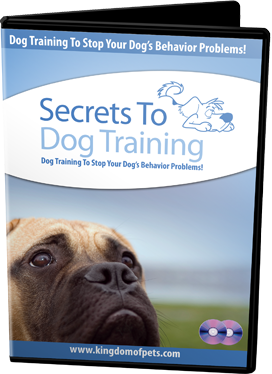If you are looking for the greatest gold-mine of easy to use "change your dog's behavior" advice ever crammed into a newsletter series then read on!
Also, make sure that you check out our 100% authentic testimonials from people who have bought Secrets to Dog Training and find out the massive difference it has made to their owner-dog relationship!
 "My wife was interested in Yorkie terriers. She e-mailed a lady (Sharda Baker) about Yorkie's. Sharda sends her info on Yorkie's and other dog topics. One of her e-mails mentioned your Secrets to Dog Training web site and your e-mail book. I recently ordered it from you and the other booklets. I was very pleased with it. I have done extensive training of our extremely bright female Jack Russell.
"My wife was interested in Yorkie terriers. She e-mailed a lady (Sharda Baker) about Yorkie's. Sharda sends her info on Yorkie's and other dog topics. One of her e-mails mentioned your Secrets to Dog Training web site and your e-mail book. I recently ordered it from you and the other booklets. I was very pleased with it. I have done extensive training of our extremely bright female Jack Russell.
When it comes to (fetch) she is tops. She will "fetch" till she drops. I have set up a complete agility course in our yard, I have used the Trick and Treat device from Sharper Image for teaching her tricks. She does Frisbee and has also had several outings doing Lure Racing (almost to perfection).
I have several "dog" neighbors that are not having as much luck with their pets. They have dominate issues. One of them has over aggressiveness issues and food and toy guarding problems. I told them about your web site and book. Their dog (while I was talking over the fence) tried to attack, through the fence, our dog. ...I highly recommend that the buy your book, and sign up for your weekly tips.
We leave tomorrow for a three week vacation to Leech Lake Mn (picture above). We will bike, canoe, hike, play frisbee and fetch (Sparky loves camping, all we have to say is were going camping, and she grabs a fetch toy and runs to the door). We will be gone for 3 wonderful weeks. I have all your materials already in the trailer for reading and using while gone. After receiving my down loads, I e-mailed all our friends (several of whom are trainers) about your books.
I will be working with the book and Sparky while we are gone. I have been busy since getting your book, getting ready for our vacation. I have been assimilating the information, but have not had the time to apply it. I will give you another report upon returning.
Thanks for taking the time to write such wonder training materials, and providing your e-mail tips. If more people would just take the time to purchase your materials, we would put the local Animal Control officers out of business, and the shelters would end up with far fewer animal "rejects"."
-- Kirk Brill (USA) (thanks on behalf of Sparky also)
In today’s issue of the Secrets to Dog Training newsletter, I thought I would tackle two of the more unpleasant aspects of owning a dog – Fleas and Worms.
It is very important that fleas are dealt with promptly, as they can spread disease such as tapeworm, typhus and tularemia. Not only that, but the itching can drive your poor dog crazy!
Fleas can be difficult to spot, and only the adult fleas actually live on dogs. Even if your part your dogs hair while grooming and do not find any evidence of fleas, it only takes one or two to cause major discomfort for your dog, particularly if he/she is sensitive to flea saliva.
If your dog is itching, and you can find no obvious cause, you should take her to the Vet.
A flea’s life cycle is 3-4 weeks long. Therefore, it takes that long to completely wipe out any flea infestations. The adult fleas, as well as any larvae and eggs will have to be terminated.
Your first step should be to attack the adult fleas. You can do this by spraying your dog’s back once a month with an anti-flea solution. Please speak to your Vet or local pet store for the right spray for your dog. Some sprays may be great for your dog, but toxic to your cat.
Next, you should invest in a flea collar for your pooch. Use a collar that is specifically made to tackle flea larvae and eggs. Some will only kill adult fleas, so choose carefully.
Vacuum your home at least once a week. Change your vacuum bag every time, so that any eggs picked up do not have a chance to hatch. You could even put a section of your dog’s flea collar in the bag before you use it.
Spray your home with a suitable insecticide spray, or have a professional do it for you (you will need to remove all pet and humans from the home while this is taking place).
Hot wash your dogs bedding at least once a week. (If the garment does not permit a hot wash, use the warmest temperature possible).
Use an outdoor flea spray on your dog’s outdoor kennel, the patio and shaded garden edges.
You should also groom your dog regularly using a fine toothed flea comb to prevent any infestations. Take your dog outdoors, and then run the comb through her coat. After each stroke, dip the comb into hot water, or rubbing alcohol. This will kill any fleas that have been collected by the comb. Fleas like to hide on the middle of the back, base of the tail, back of the neck, and in armpits and groin areas. Combing will encourage the fleas to jump off your dog, which is why it is recommended that you comb them outdoors, to prevent fleas landing in your carpet.
Worms are very common in our canine companions. The most frequently found are roundworms, hookworms, whipworms and tapeworms.
Puppies are usually born already infected with one type of worm or another, or will be infected shortly after birth by accidentally consuming eggs or fleas.
Tapeworms and roundworms are found in stool, but cause less damage than hookworms and whipworms. They can cause vomiting, diarrhea or anal itching, whereas Hook and Whipworms are more serious and cause anemia, nutritional deficiencies and dehydration. They are also harder to detect.
All types of worms cause stress to your dogs immune system, and can also be spread to humans, so they should be addressed as soon as possible.
Your Vet is the best person to advise which type of medication is best suited to your dog (some over the counter tablets can be toxic to certain dogs).
Puppies should be wormed from 2-3 weeks of age, every two weeks for several months. This prevents any infections and spreading through infected feces.
Dog’s with worms should also be treated for fleas (please see above).
Immediately removing feces will also help prevent spreading through soil.
Adults can grow up to 7 inches in length and look like strand of spaghetti. They are found in the dog’s intestines, and are caused by your dog eating something containing roundworm.
These worms only reach approximately 1 inch in length and are characterized by their hook-type shape. The dog is infected by either eating something containing larvae or the larvae may actually penetrate the dog’s skin. They attach themselves to the intestinal walls and can consume large amounts of blood, which can often give them red coloring.
Diagnosing these worms can be difficult, because evidence of an infection (eggs) will not appear in the stool for 3 months. After swallowing the eggs, the adult worm will live in your dog’s colon, often causing inflammation. The worms themselves grow to approximately 3 inches long, with a thick head and slender body (similar to the shape of a whip).
There are many different types of tapeworm, several of which dogs are vulnerable to. The most common is actually spread by infected fleas. Your dog licks himself, and the flea is swallowed.
Tape worms can grow to a maximum of 32 inches in length. They are flat and made up of rectangular segments each of which contains more eggs.
The segments are passed into the stool, so if you see what looks like grains of rice around the anus, or in the feces, please seek your Vet’s advice.
By regularly checking your dog for worms and fleas you will be able to initiate action immediately, maintaining a health dog and household.
I hope you found this article informative.
Kind regards,
Daniel Stevens and the Secrets to Dog Training Team
"Secrets to Dog Training - STOP Dog Behavior Problems!"
 I've been a professional dog trainer for well over 20 years, and in that time I've helped thousands of dog owners just like you to get the friendly, well behaved, slipper fetching, best pal they always wanted.
I've been a professional dog trainer for well over 20 years, and in that time I've helped thousands of dog owners just like you to get the friendly, well behaved, slipper fetching, best pal they always wanted.
But it didn't start out that way. I've always loved dogs, some things never change. But when I first started my professional dog training career I relied on the so-called 'best practices' when it came to dog behavior training. It was only when I heard people tell me over and over again that they just weren't seeing results that I started to question the old accepted wisdom. So I started a journey, a quest to search out the best, most effective, techniques, tips, and tricks that really work.
And that's how I came up with Secrets to Dog Training. Year after year I found new techniques that achieved the results I wanted. Eventually I had a whole book worth of great resources: Secrets to Dog training...
So, if you want to:
Then Secrets to Dog Training is just what you've been looking for!
Previous newsletters
| 01 | 02 | 03 | 04 | 05 | 06 | 07 | 08 | 09 | 10 | 11 | 12 | 13 | 14 | 15 | 16 | 17 | 18 | 19 | 20 | 21 | 22 | 23| 24 | 25 |
| 26 |